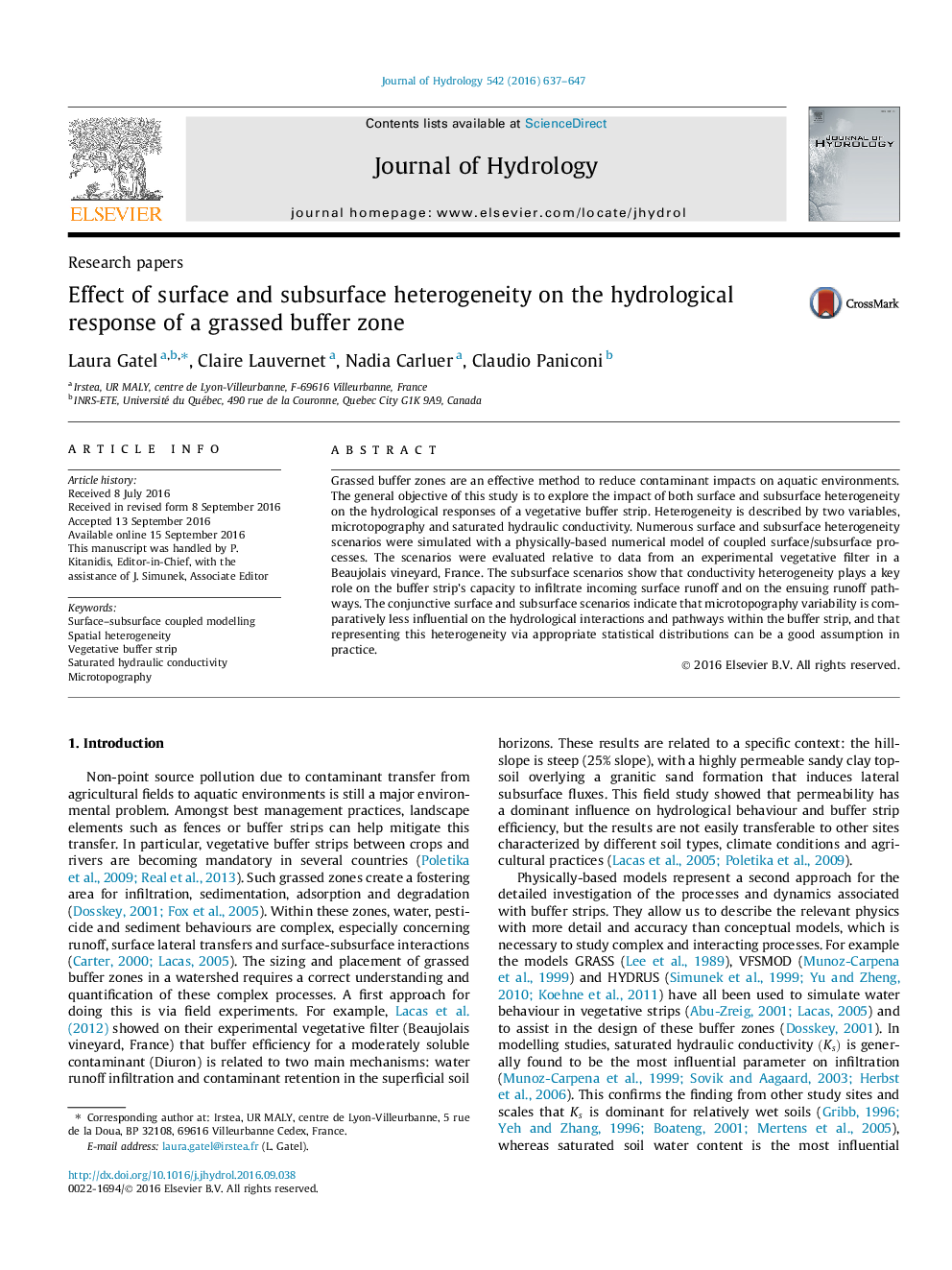| Article ID | Journal | Published Year | Pages | File Type |
|---|---|---|---|---|
| 6409297 | Journal of Hydrology | 2016 | 11 Pages |
â¢Heterogeneous saturated conductivity (Ks) reflects the complexity of buffer strips.â¢Field data-enforced model parameterization improves consistency with observations.â¢Hydrological responses are more sensitive to Ks than to microtopography variability.
Grassed buffer zones are an effective method to reduce contaminant impacts on aquatic environments. The general objective of this study is to explore the impact of both surface and subsurface heterogeneity on the hydrological responses of a vegetative buffer strip. Heterogeneity is described by two variables, microtopography and saturated hydraulic conductivity. Numerous surface and subsurface heterogeneity scenarios were simulated with a physically-based numerical model of coupled surface/subsurface processes. The scenarios were evaluated relative to data from an experimental vegetative filter in a Beaujolais vineyard, France. The subsurface scenarios show that conductivity heterogeneity plays a key role on the buffer strip's capacity to infiltrate incoming surface runoff and on the ensuing runoff pathways. The conjunctive surface and subsurface scenarios indicate that microtopography variability is comparatively less influential on the hydrological interactions and pathways within the buffer strip, and that representing this heterogeneity via appropriate statistical distributions can be a good assumption in practice.
